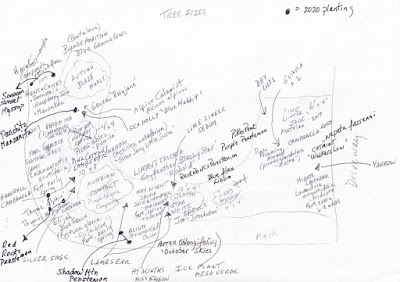 |
| Photo: Nancy Shepard |
I’ve been keeping various journals about my adventures in gardening for about 10 years. Before that, I just relied on memory and whatever they were selling at Home Depot. If they sold those plants at the local hardware stores, those must be right for my garden I reasoned back then. When I started writing down my mistakes and successes, gardening became a more serious endeavor. My journals have evolved over time as I grew in my knowledge and saw more success. I can now see there are constant ingredients that have proven most helpful to me in making records about my garden. Here are some of them.
Pictures, as many as possible
In the beginning I just wrote notes as I surveyed my yard at the end of summer. I quickly started adding pictures each year and now can’t do without them. I’ve used Walgreens to get 4x6 inch pictures for 35 cents each. Pictures are especially gratifying when I can see the “before” and “after.” Like seeing a picture of a very messy, weedy area and then a picture two years later after I completely redid that patch of my yard. Seeing successes using pictures is a great motivator when you have a hail storm wipe out your whole garden for one season.
 |
| Photo: Nancy Shepard |
Lessons Learned
A garden journal wouldn’t be complete without including what grew well and what didn’t. I still laugh when I see the photo of my contorted carrots because I planted the seed too closely and didn’t thin them.
 |
| Photo: Nancy Shepard |
One year I wrote “Morning Glories, what a nightmare! They came up as volunteers all over the yard. Get rid of these and don’t ever plant again!” And in 2012 “Do not plant sunflowers because they attract a lot of wasps!” And the year my green beans got the mosaic virus and I refrained from planting them one summer and got a great crop the next. I’ve also captured all the soil test results I’ve done over the years for comparison (always low in nitrogen.) And one year I used pieces of carpet between rows in my veggie garden to keep down weeds (very ugly and likely toxic.)
Time Lapses
I’ve lived in my house for 20 years now and have slowly seen how my backyard neighbors’ trees keep decreasing the sun in my yard as they grow bigger and bigger. I only have half the veggie garden I used to but I also saw a huge increase in sunny areas after I had a very large cottonwood tree removed. Over time – seeing from one year to the next how things can change so extremely – weather, temperatures, drought, insect swarms – never a dull moment in Colorado!
Pasting in seed packets and plant tags
This has proved to be the most valuable to me because I can see exactly what I bought and tried. I write the year it was planted and where and follow up with “amazing performer” or “didn’t even last one year.”
 |
| Photo: Nancy Shepard |
Sketches
These have been especially useful when we completely renovated the front yard landscape, ridding it of giant junipers and a barely thriving lawn and now seeing how the new trees and perennials look better and better each year. We put in so many new items my sketch got messy, especially when I decided I needed to learn all the botanical names.
 |
| Photo: Nancy Shepard |
Non-garden notes
Just as useful were the notes not related to plants. Like a reminder to refinish our deck and paint the gazebo, build a new brick walkway and replace the old railroad ties on the back wall. And also a reminder to put out snake deterrent in the spring. My discovery of the non-toxic pond dye like they use at the Denver Botanic Gardens was very gratifying.
Themes that don’t go away
And then there are the themes that don’t ever seem to go away. The words, “messy,” ‘overgrown,” and “needs pruning” and “bindweed “are written every single year. You would think that with all this journaling I’d get the message.
Here’s to all of you who keep records about your gardening in whatever fashion you choose!